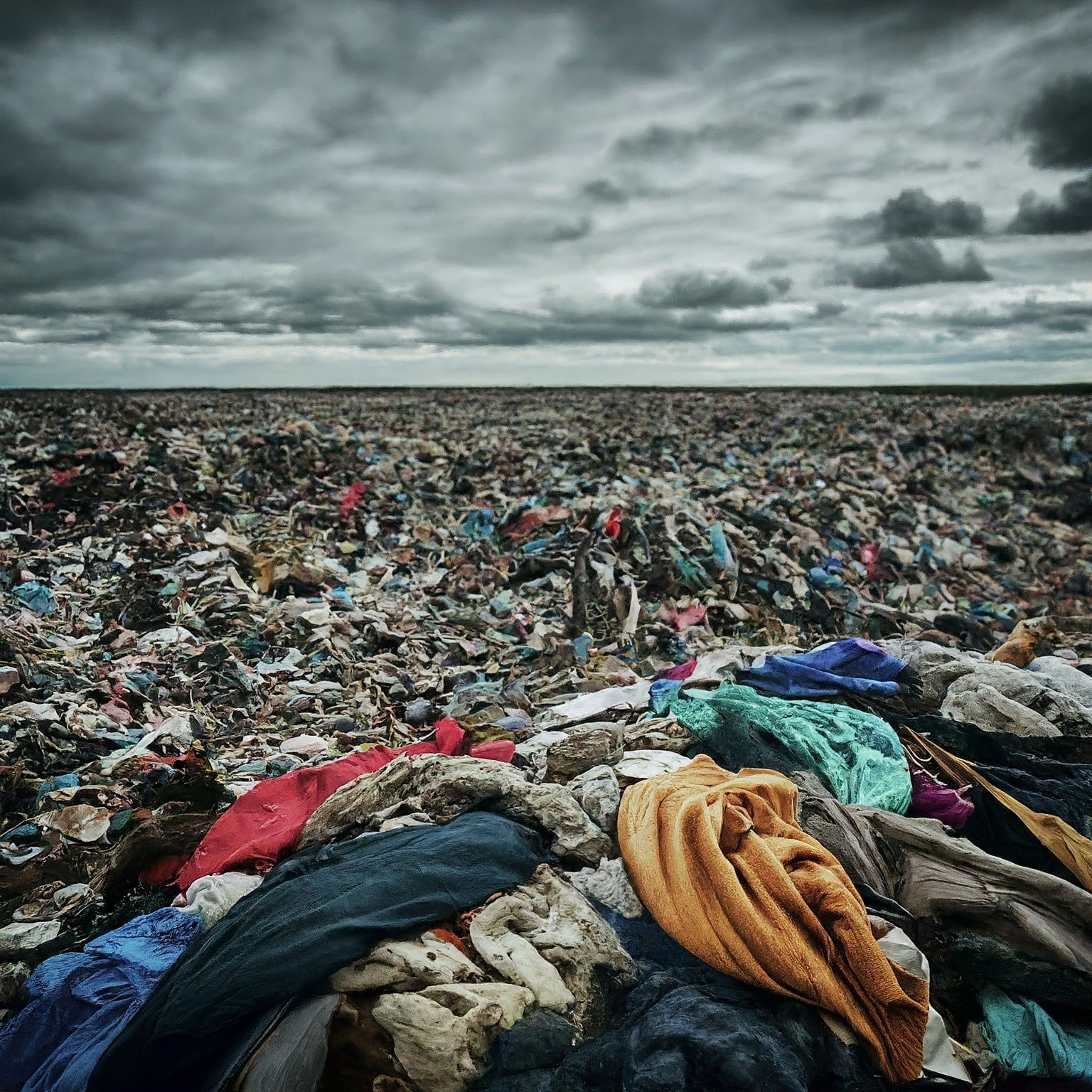Did you know? 85% of All Rejected Clothing Ends Up In The Landfill Or Incinerated

The more clothing we wear, the more it ends up being thrown away. Fast fashion has drastically increased the amount of clothing we buy and wear – and how quickly it ends up in a landfill. We increasingly perceive garments as a disposable resource, one we can throw away and replace whenever we want.
Although the financial cost of a frequent disposal of clothing has gotten much more manageable; the environmental toll of this disposal is only increasing.
Currently, 85% of all rejected clothing ends up in a landfill or being incinerated. Only a small fraction is recycled, repurposed, or repurchased.
Why don’t we recycle all this clothing?
The first question that likely crosses your mind is: ‘how come we don’t recycle all this clothing, rather than throwing it away?’.
The recycling of clothing is a complicated process. Firstly, most garments are made from fabric blends, which makes them very difficult to recycle. Furthermore, the tags, prints or buttons needs to be removed before the garment is recycled. Even when all this is sorted, the process of sorting these clothes is often very labour-intensive and prone to mistakes. While there are some emerging technologies that leave this work up to machines, they’re only beginning to be implemented in only some innovative facilities.
The process that follows is energy-intensive, expensive and often simply doesn’t financially pay off for recycling facilities.
Because of that, you’re more likely to encounter recycled clothing made from post-consumer waste such as plastic bottles, than recycled clothing actually made from old clothing.
Fast fashion as the problem
Fast fashion garments aren’t made to last – they’re made to be discarded and replaced with more fast fashion garments. Not only does the quality of the garments make it difficult for us to re-wear them, so does the design.
Fast fashion incorporates short-lived trends into its collections for this very reason – so that just a few months later, the garment you bought will be outdated. If you care about staying on top of the current trends and aesthetics, you’ll need to keep buying – and the cheap price of fast fashion makes that easier than ever before.
Solutions to the issue
Knowing about this impact of fast fashion on the environment and all the clothing waste it produces, what can we do to make a difference and support more sustainable practices in the fashion industry? Here are a few of our favourite ways to do so:
- Make your clothes last as long as possible – maintain them regularly and keep them until they truly can’t be worn anymore.
- Stop supporting fast fashion and its unsustainable practices. Instead, buy from sustainable fashion labels which are battling overproduction and overconsumption.
- Buy your clothes second-hand, to give a second life to garments that would otherwise turn to clothing waste, end up in the landfill or an incineration facility.






Leave a comment